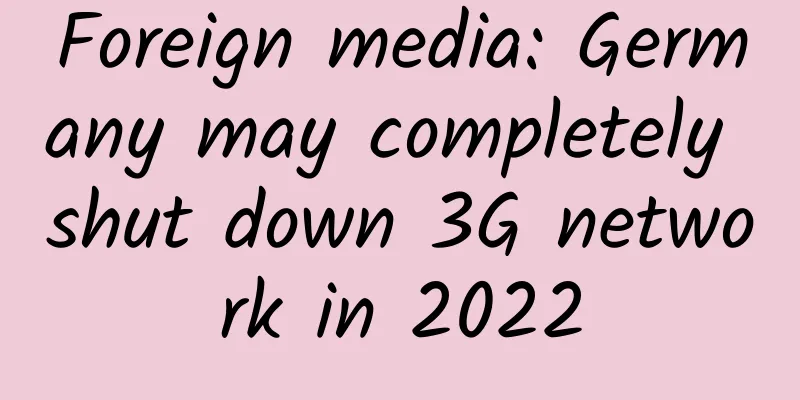IPv6, the savior of the Internet of Things industry?

|
On November 26, 2019, all IPv4 addresses were allocated, which means that there are no more IPv4 addresses to be allocated to ISPs and other large network infrastructure providers. The RIPE NCC, which is responsible for allocating Internet resources in the UK, Europe, the Middle East and parts of Central Asia, announced that its last reserve pool of IPv4 address space was completely exhausted at 15:35 UTC+1 on November 25.
Theoretically, IPv4 address exhaustion means that no new devices can be connected to the Internet. There are currently several ways to mitigate this situation:
Here are some advantages of IPv6: Larger address space IPv4 uses a 32-bit address length, which can provide us with 2^32, or about 4.3 billion addresses, while IPv6 uses a 128-bit address length, which provides us with 2^128 addresses. It can be said that there are no restrictions on the addresses provided. A conservative estimate of the actual addresses that can be allocated by IPv6 is that more than 1,000 addresses can still be allocated per square meter of the entire earth. It is no coincidence that it is possible to assign an IP address to every grain of sand in the world. Faster transfer speeds IPv6 uses a fixed header, unlike IPv4 which carries a bunch of lengthy data. The short header improves the efficiency of network data forwarding. And because IPv6 has a smaller routing table and stronger aggregation capability, it ensures that the data forwarding path is shorter, greatly improving the forwarding efficiency. IPv6 also eliminates most of the common address conflicts in IPv4 and provides more simplified connections and communications for devices. More secure transmission method IPv4 has never been considered secure. Although more and more websites are turning on SSL, there are still a large number of websites that do not use HTTPS. However, IPv6 is built on a secure basis from beginning to end. It authenticates and encrypts data at the network layer and verifies IP packets, providing users with data security from client to server and ensuring that data is not hijacked. In addition to the above, compared with IPv4, IPv6 is more friendly to mobile terminals. It can enhance the mobility, security and routing characteristics of mobile terminals, while reducing the difficulty and investment of network deployment. IPv6 adds automatic configuration and reconfiguration technology, plug and play, and automatically adds, deletes and updates configuration for information such as IP addresses, improving the manageability of IPv6. |
<<: Gartner: China's IT spending is expected to grow 7.7% in 2021
>>: Approaches to Solving Multiradio Hardware Design Challenges
Recommend
What is the principle of WebSocket? Why can it achieve persistent connection?
[[396397]] To better understand WebSocket, we nee...
Yunnan Telecom will gradually shut down its 3G network starting June 1
Yunnan Telecom recently issued an announcement st...
Before the 5G feast, the operators' tight restrictions have been booked
At the 2019 Mobile World Congress held in Barcelo...
4G network speed slows down? Ministry of Industry and Information Technology talks with three operators on this issue
On the 22nd, the Ministry of Industry and Informa...
edgeNAT Los Angeles 4837 dual ISP host simple test
In February, the tribe shared the news that edgeN...
2018 F5 China Application Service Summit Forum was grandly held to share useful coping services in a multi-cloud environment
[51CTO.com original article] At 9:00 am on May 22...
Huawei's new generation of 400GE data center switches enable new infrastructure and stimulate new momentum
[Shenzhen, China, July 24, 2020] At a press confe...
ADX application delivery ensures your business continuity and improves your access experience
The purpose of IT informatization is to improve t...
Shifting gears to 5G: Operators will experience both hardship and sweetness in 2019
Recently, the three major operators have released...
How to break through the bottleneck of opening up my country's telecommunications sector?
Author: Cao Lei, Information and Communication Bu...
Thinking about the Boundary Expansion of Web Front-end in the 5G Era
Author: Wang Shuyan and Wang Jiarong, Unit: China...
Simplifying enterprise operations and maintenance: the right network automation strategy is key
[51CTO.com original article] From the development...
Use wireshark to analyze tcpdump network data packets to quickly troubleshoot and solve the frequent abnormal TCP connection disconnection problem of OceanBase in a certain environment
1. Problem phenomenon A customer reported that in...
Can Huawei reshape the Internet?
[[320457]] This article is reproduced from Leipho...
The convergence of edge data centers and 5G revolutionizes data transmission and the Internet of Things
With the rapid development of the digital age, th...









